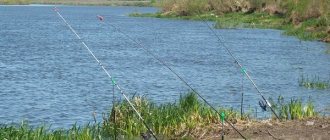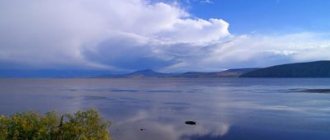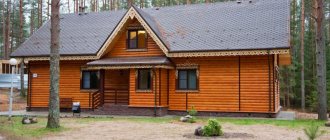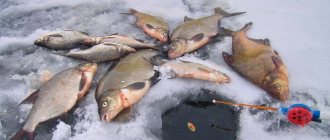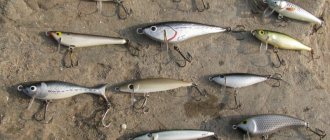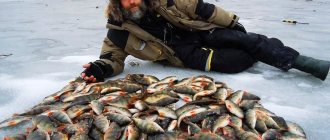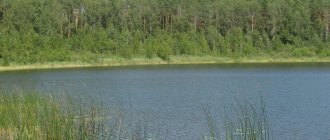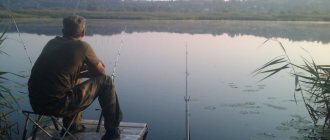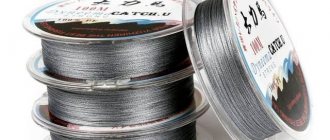Reservoirs in Lipetsk and the Lipetsk region
Map of rivers of the Lipetsk region Reservoirs of the Lipetsk region provide fishermen with the opportunity to get unforgettable emotions; there are many places where you can successfully go fishing.
Fishing on the rivers and lakes of the Lipetsk region is possible at any time of the year. In the city of Lipetsk there are also artificial reservoirs where you can relax with a fishing rod in your hands and please yourself and your loved ones with a good catch. Excellent places for fishing in Lipetsk are the Sokolsky Bridge area, Silicate Lakes, and the Dam. Many local fishermen like to fish on the numerous beaches of Lipetsk, where you can catch asp, chub, bream, roach and other whitefish. The pond located near the railway station is also popular with Lipetsk fishermen. However, as experienced fishermen say, you can fish within the city along the entire right and left bank of Voronezh.
Rivers
The region has a well-developed river network, its length is 5300 km. 127 rivers with a length of over 10 km, 212 rivers with a length of less than 10 km and more than 200 streams flow through the territory of the Lipetsk region. The region's territory is located in the upper part of the river basin. The Don, which is the main waterway of the region and cuts through it from north to south for more than 300 km. Almost all other rivers in the region are tributaries of the Don or belong to its basin. The exception is the Ranova River, which flows in the northeast of the region (Oka River basin). The largest rivers in the region: the Don River with its tributaries - Krasivaya Mecha, Bystraya Sosna, Snova and the Voronezh River with its tributaries - Stanovaya Ryasa, river. Matyra.
|
|
|
Lakes
The lakes of the Lipetsk region are very diverse and also have abundant fish resources. Many lakes in the Lipetsk region are active hydrological reserves and invite you not only to enjoy the opportunity to spend time “quietly hunting”, but also to admire the pristine and beautiful territories.
There are 571 lakes in the Lipetsk region, their total area is 148 km². The lakes are distributed unevenly throughout the territory. The largest number of lakes are found in humid places - floodplains.
|
|
Main rivers of the Lipetsk region (list)
The region has an extensive and well-developed hydrographic network. A total of 127 rivers and over two hundred streams flow through its territory. In most cases, their sources are underground springs. The largest rivers of the Lipetsk region are listed below:
- Matyra.
- Voronezh.
- Don.
- Standing Cassock.
- Beautiful Mecha.
- Pine.
- Olym.
- Again.
- Plavica.
- Ptan.
- Baygora.
The total length of the region's river network exceeds 5,000 kilometers.
Many rivers of the Lipetsk region are full-flowing. They are characterized by a mixed type of nutrition with a clear predominance of snow (from 60% to 80%). The spring flood occurs in mid-April. Summer low water is often interrupted by rain floods. The rivers become covered with ice in early December, and freeze-up usually lasts 125-130 days.
According to the nature of the flow, all watercourses in this region can be divided into two types:
- Rivers flowing from the Central Russian Upland. They are distinguished by relatively fast flows and significant slopes.
- Rivers of the Oka-Don Plain. They are characterized by slight slopes and low speed of water flow in the channel.
Paid fishing in the Lipetsk region
Paid fishing is a guarantee that no one will return home empty-handed. Most paid reservoirs are equipped with walkways, gazebos and barbecues where you can shelter from bad weather and cook food over a fire.
Makarovsky Pond
Address: Lipetsk region, Khlevensky district, village. Dmitryashevka, “Makarovsky Pond” Phone or +7 (960) 108-65-90 Website: https://makprud.ru
Pond of gully-beam type. Due to meltwater and springs flowing underwater, the pond has high water quality, which, in turn, provides excellent habitat for fish. Along the banks there are gazebos with everything necessary for a comfortable and quality outdoor recreation. You can rent fishing equipment from the guards, as well as purchase firewood for a fire. Access to the pond does not present any difficulties (in any weather), the road from the asphalt to the pond is strewn with crushed stone.
Recreation center "Rural spaces"
Address: Lipetsk region, Lebedyansky district, Kuiman village, st. Lipetskaya building 1. Phone: +7 (47466) 91-3-36 Website: https://turbaza48.ru
Excellent paid fishing on a pond in the Lipetsk region, just 30 km from Lipetsk and 20 km from Lebedyan. Anglers have a large amount of fish at their disposal: fishing and catching carp, crucian carp, tench, carp, pike perch, grass carp, pike and trout. The pond is equipped with walkways, gazebos and barbecues where you can shelter from bad weather and cook food over the fire. Organization of overnight accommodation: wooden houses with sleeping places, tent camp. A farmstead with the opportunity to buy organic food: fresh meat, eggs, milk, sour cream, cottage cheese, cheese, bread, pickles and preserves, homemade liqueurs. Convenient access, guarded territory, parking, children's, sports and playgrounds.
Pond for fishing and recreation “Vysokopolye”
LLC "RybPromLipetsk" Address: Reservoir on the river. Telelyuychik, Gryazinsky district Phones: 8 (4742) 362-982, 8-960-152-55-55
The pond is landscaped. Available for fishing: equipped places and bridges. For recreation: barbecues, gazebos, houses, etc. Tackle for fishing on a reservoir: spinning rod (jig, bombard, etc.), float rod (swing, plug, match), bottom rod (feeder). You can catch: silver carp, grass carp, perch, rudd, roach, as well as trophy fish: carp, carp, tench, crucian carp, pike.
Museums and reserves of the Lipetsk region
There are not many of them in the Lipetsk region, but each of the existing ones is distinguished by its originality and uniqueness.
Galichya Mountain
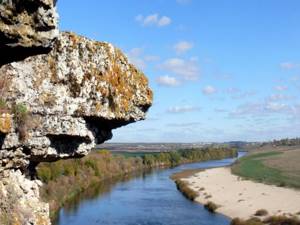
- Coordinates on the map: 52.596357, 38.924705.
The reserve is located in the Zadonsk region, on the eastern slope of the Central Russian Upland. Its area is only 230 hectares, but this does not lose its uniqueness. The fact is that this small reserve was listed in the Guinness Book of Records as the smallest in the world.
It is famous for its unique landscapes, which have been preserved in their original form. Even the oak trees that were burned in a fire in 2010 remained intact here. The reserve owes its name to jackdaws. These small, scandalous birds from the corvid family once fell in love with the rocks and nested here in large numbers.
An equally interesting fact is that representatives of flora and fauna are completely atypical for this area. The nature of Siberia or the Caucasus suits them much more. Scientists believe that they came to the Central Russian Upland as a result of the convergence of a glacier.
Museum-Estate Krai Dolgorukovsky

- Address: st. Likhacheva, 24, village of Dolgorukovo.
The strange museum, in which everything is thrown into a common heap, is called by locals a “garbage dump.” Tourists who have already visited this so-called art house are not far behind them. Indeed, the exhibits here are mixed haphazardly: ancient icons can be placed next to photos of modern politicians or historical figures.
And some are even made from real garbage: plastic, scrap metal, glass. From the outside, the estate makes a strange impression. The stucco molding and turrets give it a certain avant-garde touch and madness, and the fantastic installation figures attract visitors. This unusual museum is located in the village of Dolgorukovo.
Meshchersky Arboretum
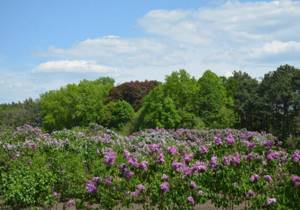
- Address: Stanovlyansky district, Barsukovo village, Sirenevaya street, 2.
Initially, it was just a park on the estate of professor-dendrologist D. Artsybashev in the village of Meshcherki. Here he began to carry out his first experiments on the introduction of plants. The park occupied only 4 hectares, but in this area there was a place for 90 species of plants brought from different parts of the planet. The professor managed to defend the arboretum even after the revolution. It received the official name “Tula Acclimatization Station” and new territories.
Selection work with lilacs, the pride of the arboretum, began in 1939, but was prevented by the Second World War. The station was destroyed by the Nazis, along with its unique libraries and archives.
After the end of the war, work began on its restoration. Today the Meshchersky Arboretum is the largest forest-steppe experimental breeding station in Russia. Its collection includes 1,186 plant species, including 96 varieties of lilac. Of these, 102 species are considered rare and are listed in the Red Book, and the station itself has the status of a specially protected area.
Fishing in Lipetsk
Lipetsk is located 438 km from Moscow on the border of the Oka-Don Plain and the Central Russian Upland on both banks of the Voronezh River. Fishing in Lipetsk is carried out in many places in the city, which is facilitated by its location.
The city also has artificial reservoirs where you can relax with a fishing rod in your hands and please yourself and your loved ones with a good catch. Excellent places for fishing in Lipetsk are the Sokolsky Bridge area, Silicate Lakes, and the Dam. Many local fishermen like to fish on the numerous beaches of Lipetsk, where you can catch asp, chub, bream, roach and other whitefish. The pond located near the railway station is also popular with Lipetsk fishermen. However, as experienced fishermen say, you can fish within the city along the entire right and left bank of Voronezh. Fishing in Lipetsk, on the Voronezh River, is one of the most popular recreational activities for many citizens.
You can fish in the Voronezh River and other bodies of water all year round. There are a lot of fans of ice fishing in Lipetsk and many are looking forward to freezing in order to get to those places where in the summer season they cannot be reached without a boat. Mostly winter fishing in Lipetsk is for bream, pike, perch, roach; many fishermen go to fish on the Don, hoping that the probability of catching there is higher.
Sport fishing competitions are also often held in Lipetsk, and professionals are already showing their skills there. In a word, fishing in Lipetsk and the region is attractive for both amateurs and professionals, because fishing is not just entertainment - it is a special world that is understandable only to its true connoisseur.
High mountains and alluring cliffs of the area
There are no rocks as such in the Lipetsk region. Limestone outcrops here are called mountains. But some of them are so high and powerful that they can easily compete with real rocks.
Kurapovskie rocks
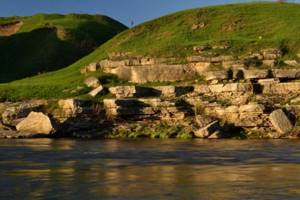
- GPS coordinates: 52.959332, 39.029328.
An amazingly beautiful place in the Lebedyansky district is the Kurapovskie Rocks. Although rocks are too strong a name for them. In fact, these are limestone slabs of different thicknesses, intricately laid on the left bank of the Beautiful Sword. From a distance, they most closely resemble the romantic ruins of an ancient castle. The only thing missing from this attraction is the loophole windows.
They are quite ancient, these plates, and they remember the times when the ancient Tethys Ocean raged on the planet. And they themselves came out of it. The limestone from which the slabs are made is nothing more than the fossilized remains of marine animals. Over the course of 100 million years, they were layered on top of each other so that someday people would have the opportunity to appreciate this natural beauty.
Valley of Stones
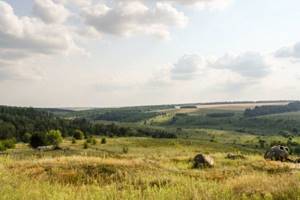
- Coordinates: 52.960737, 38.773429.
The remains of the Ancient Ocean, or rather what was at its bottom, can be seen not far from the village of Ishcheino in the Krasninsky district. Just outside the village there is a fantastic landscape that can easily be mistaken for a movie set. A real valley of stones of different sizes, whose age is estimated at 40 million years, exists in the realities of our time.
The quartzite-like sandstone that forms the stones looks unusual in itself. But what gives it a special charm are the so-called traces of evolution - the imprints of insects and plants. Many of the stones are covered with moss and have an amazing hue. Few residents of the Lipetsk region know about this place, not to mention tourists. While locals consider the Valley of Stones to be very romantic and have been coming here for a long time to confess their love to each other.
Stone Mountain
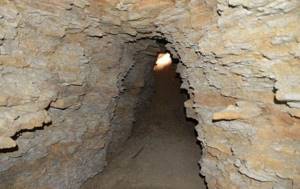
- Coordinates: 52.132986, 39.161601.
Based on the accumulations of rocks that form this mountain, a geological record of the region can be compiled. From the north it is surrounded by accumulations of the most varied stones: quartzites, granites, sandstones. They differ not only in composition, but also in size and age.
Some of them are more than 1.5 meters in diameter. Inside the mountain there are still quarry caves. Since ancient times, material for construction has been mined here. There is a stone mountain near the village of Kon-Kolodez.
Vorgol rocks
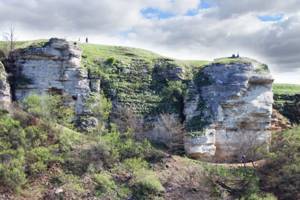
- Coordinates: 52.573145, 38.352376.
Not far from Yelets there is a place that looks completely unusual for the plains of central Russia. It is located in the Vorgola valley, which is already called Switzerland for its incredible climate, more suitable for alpine meadows. And the plants here are appropriate, mountainous, rare.
Rocks stretch along the entire course of the Vorgol. They are located on both banks and have a height of about 50 m. Because of this, the river valley looks like it is in a rocky canyon. Most often, rock climbing enthusiasts come here. The Vorgol rocks are suitable for this extreme sport like nothing else. The festival of the Russian Climbing Federation is held annually in this same place.
Types of fish in reservoirs
Lipetsk reservoirs are rich in fish. And they contain numerous species of fish, which are simply impossible to list here. One has only to indicate the main species of fish for which fishing is more active. These include:
- Chub
- Bream
- crucian carp
- Carp
- Ide
- Roach
- Rudd
- White amur
- Perch
- Pike
Seasoned fishermen in the Lipetsk region hunt for catfish and pike perch. But the behavior of these fish species here is so cautious that it is difficult to catch them without having certain knowledge. But if you decide to fish for them, seek advice from local fishermen: they will show you the most promising places and methods of catching rare, but valuable, inhabitants of the Don and other rivers. You can also contact paid fishing bases that are ready to provide you with all the conditions for successful fishing.
Springs and springs of the Lipech region
The central part of Russia is the territory from which the Christianization of Rus' began. Perhaps that is why there are so many holy springs and springs here.
Holy spring White Keys
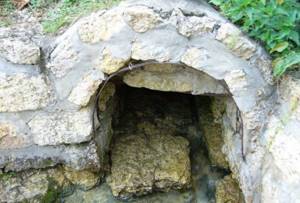
- Coordinates: 52.407346, 39.104265.
White Springs or the source of the 12 Apostles in the Zadonsk region is one of the most famous not only in the Lipetsk region, but also far beyond its borders. It comes straight from the mountain, and you can drink this water all year round. Locals call it “alive.” They believe that water really heals.
The spring received its name in honor of the 12 apostles for the number of holes from which water flows. Interestingly, on the other side of the mountain there is also a spring, which was called the Black Spring, and the water in it is seriously considered “dead”.
Spring Forgiven Well
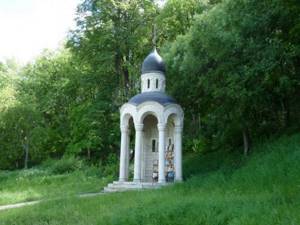
- Coordinates: 53.578682, 38.839854.
The Dankovsky district also has its own source. It is located on the outskirts of the Romantsevsky forest. The well is considered ancient. The first mentions of him are found in the chronicles of 1571. And even then he was considered a saint. It was here that they said goodbye to their relatives when leaving for a foreign land or war.
Under Soviet rule, the source was covered with garbage and was remembered again only at the end of the century. The well was cleared, but for a long time it remained undeveloped. In 2004, a wooden chapel with a font was built next to it, and after another 5 years, it was consecrated in honor of the prophet Elijah.
There are many wonderful stories associated with water from the Forgiven Well. Healing hernias, gaining strength in the legs, getting rid of infertility - this is not a complete list of miracles. At the same time, an analysis of the water from the source showed that it contains a very large amount of silver ions, thanks to which it does not deteriorate for a long time and remains clean.
Holy Spring Seven Brothers
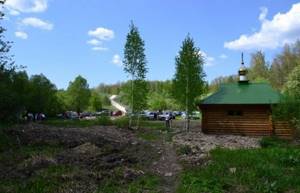
- Coordinates: 52.825942, 38.969276.
An amazing place with picturesque surroundings is located near the village of Yablonovo, Krasninsky district. The nature here would be more suitable for the Altai steppes, but somehow miraculously ended up in Central Russia.
This is where the Plushanka flows - the cleanest river in the region, which originates from seven turbulent springs gushing out of a limestone mountain. The largest of them is located directly under the rock. It is landscaped, there is always a ladle hanging here so that everyone can drink water.
There is a beautiful legend about the origin of these sources, dating back to the times of the Golden Horde. After the victory on the Kulikovo field, 7 brothers were returning home, but on the mountainside they were overtaken by a detachment of Tatar-Mongols thirsting for revenge.
The fight was brutal, and none of the brothers survived. As soon as the last of them fell, lightning struck the ground and 7 springs were hammered from this place. Thanks to this, people still remember the brother-defenders of Rus'.
Fines and bans on fishing
Wintering pits are very attractive to poachers. Illegal catches can be enormous, leading to sharp declines in fish stocks. It sometimes takes several years for fish numbers to recover. That is why wintering pits in the Lipetsk region are under special control. Detailed maps of reservoirs have been compiled, on which all wintering pits are marked. From mid-November until the end of March, all types of fishing, including recreational and sport fishing, are prohibited in these holes. Violators will face heavy fines and other administrative measures. You can go out for winter fishing, but only in those places that are not covered by the ban.
Pine
In the Lipetsk region, the river is the largest tributary of the Don. Its length within the region is about one hundred kilometers. The river is fed by spring and melted snow waters. It is distinguished by a very winding channel with numerous reaches and riffles, as well as a significant flow speed for a flat watercourse. For this, the Sosna River received a bailiff - Bystraya.

see also
|
|
|
Nearest populated areas:
| Bakhaev farm | Borinskoe village | Krasny Luch village near the station |
| Kruglyanka village | Highmountain village | First of May village near the station |
| Polozov village near the station | Gordenin farm village near the station | Yakovlevka village |
| Yaman village |
